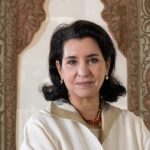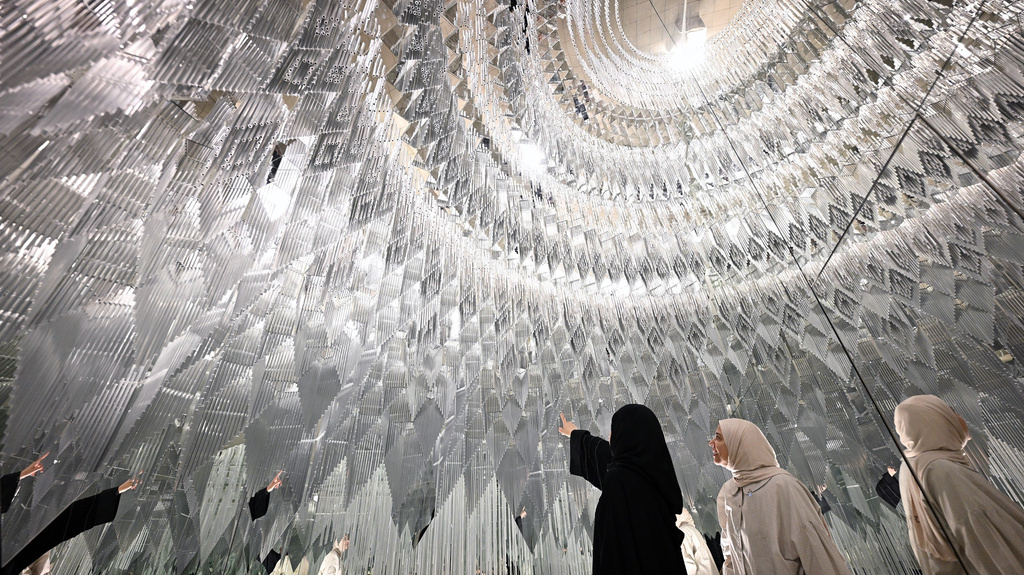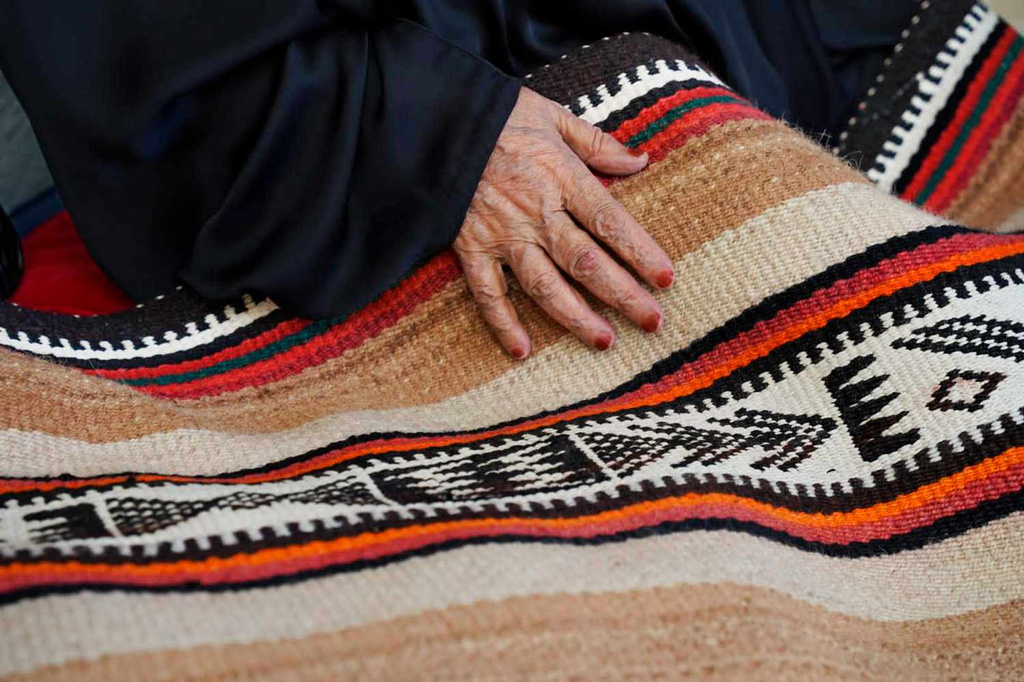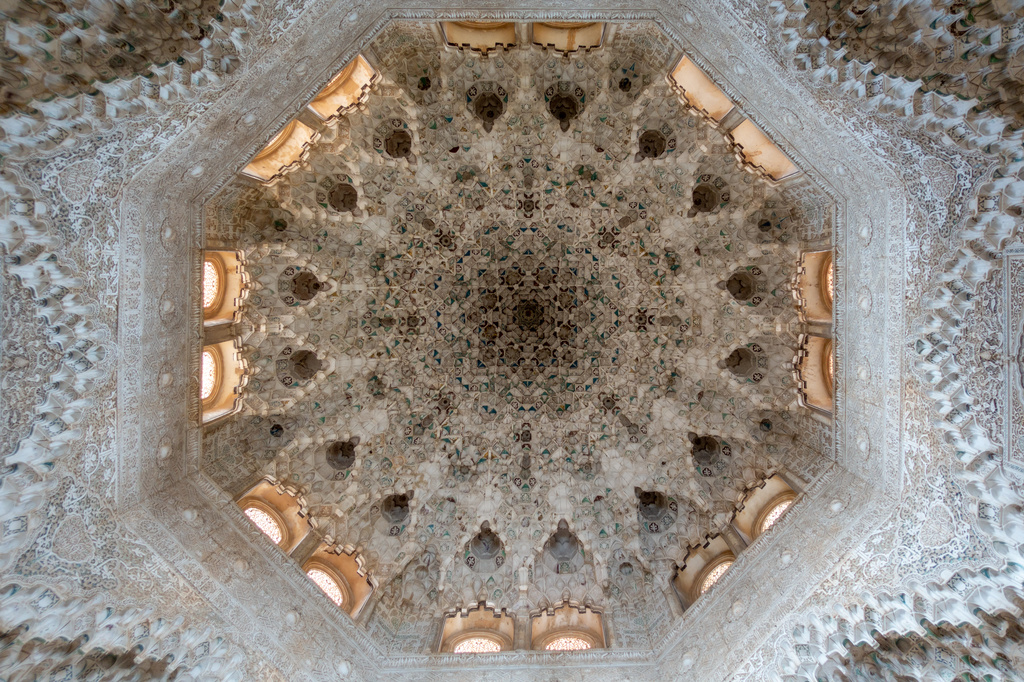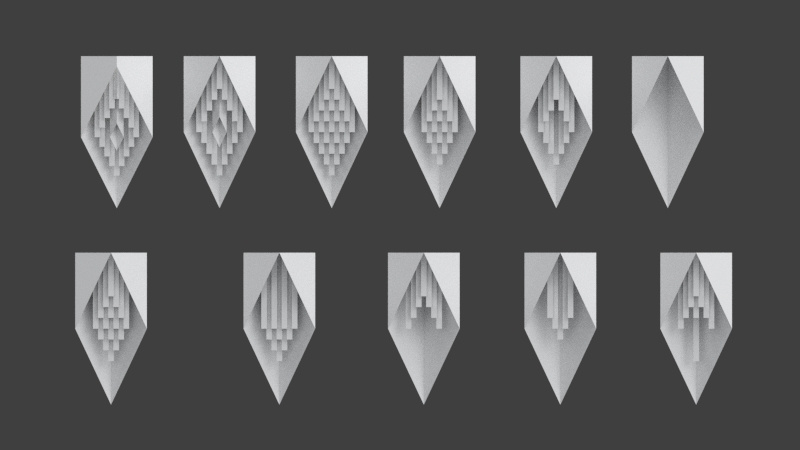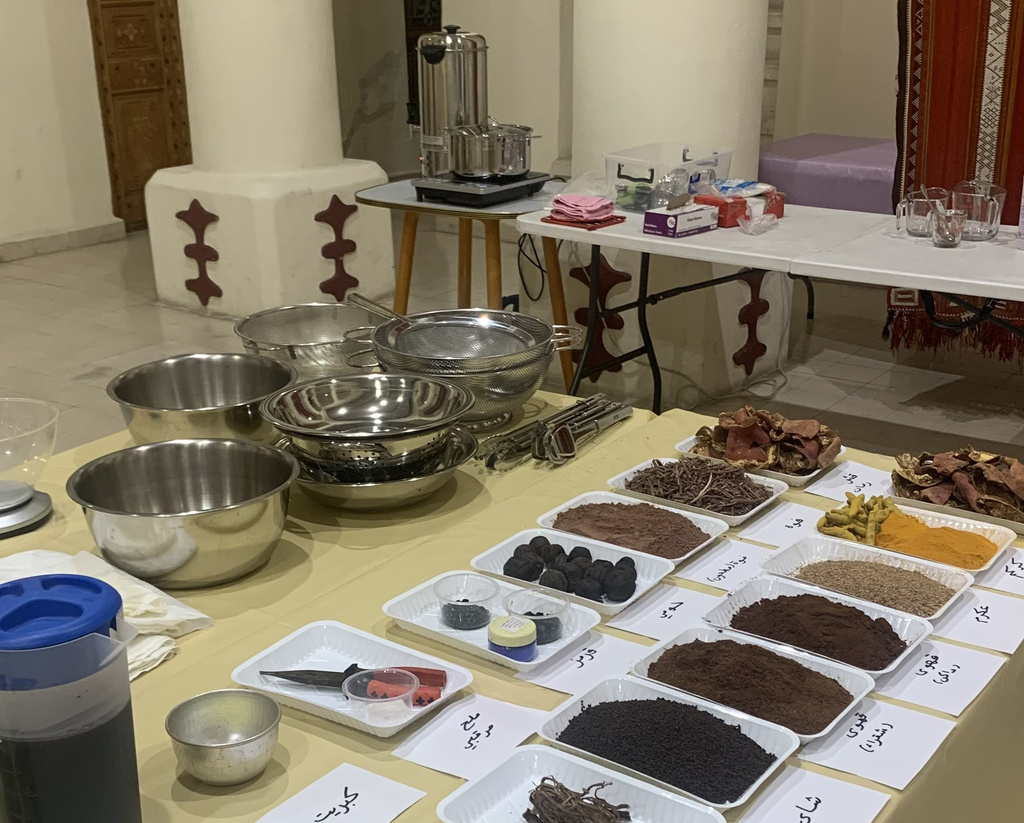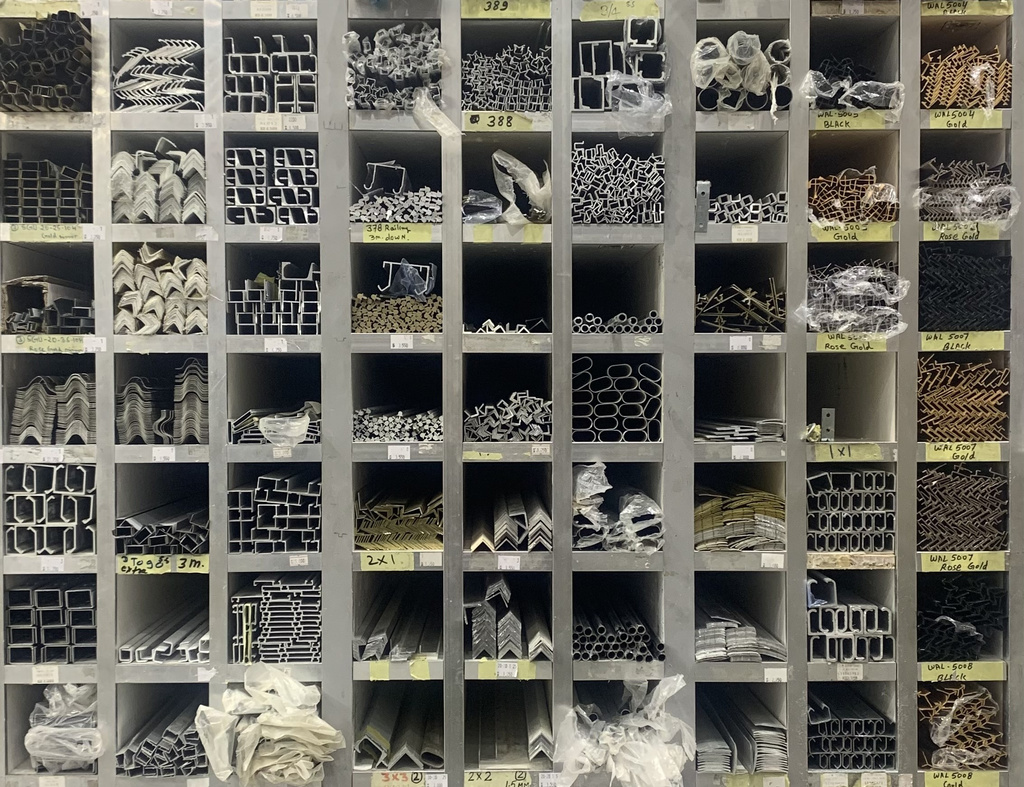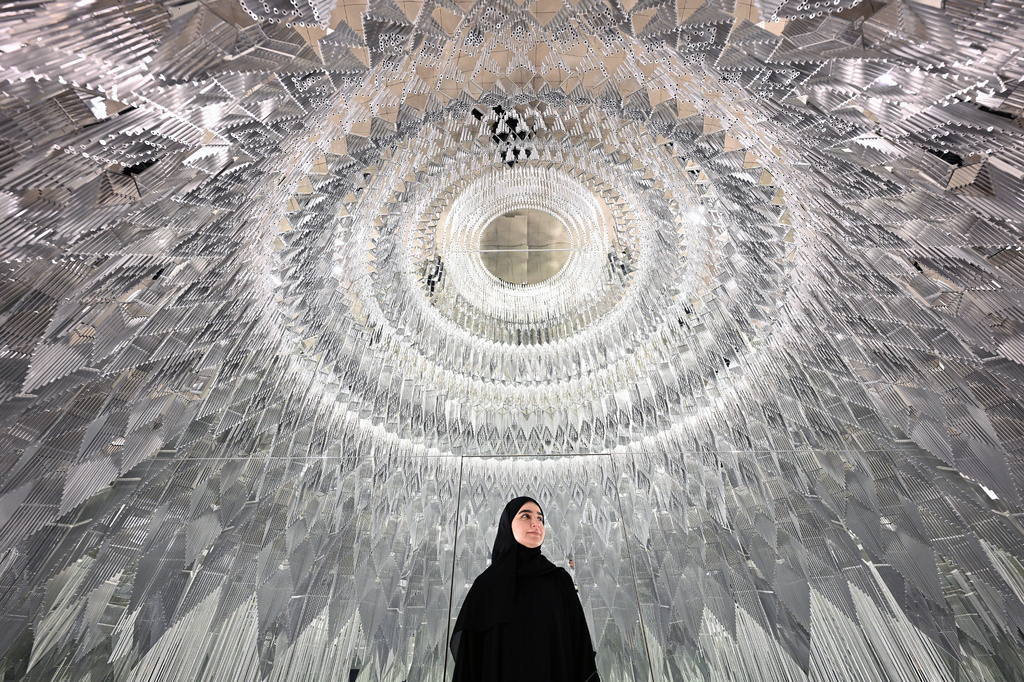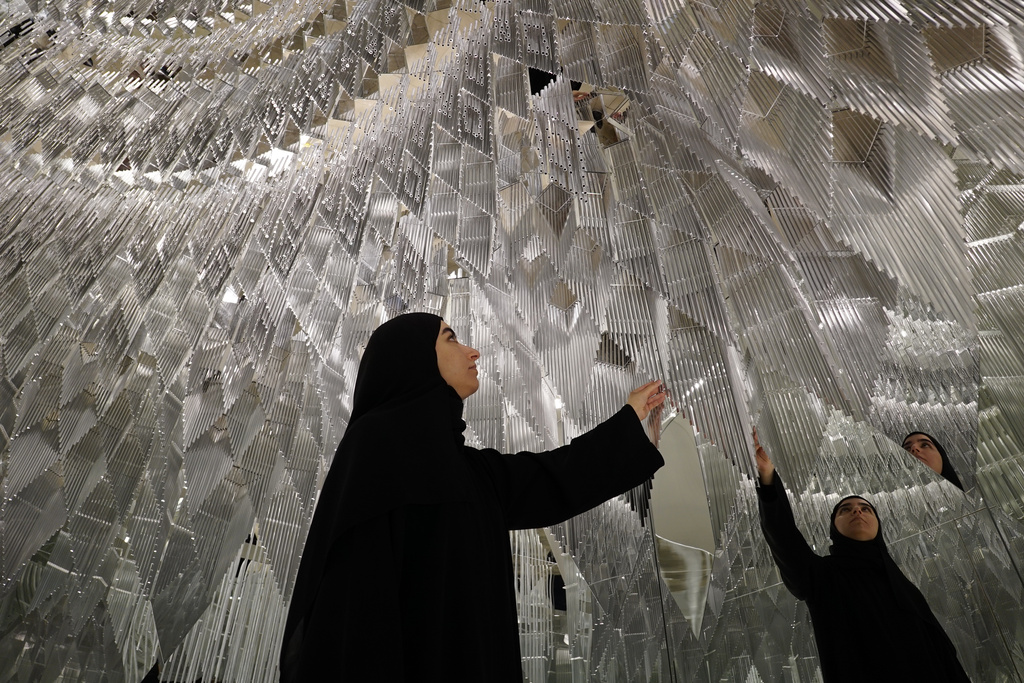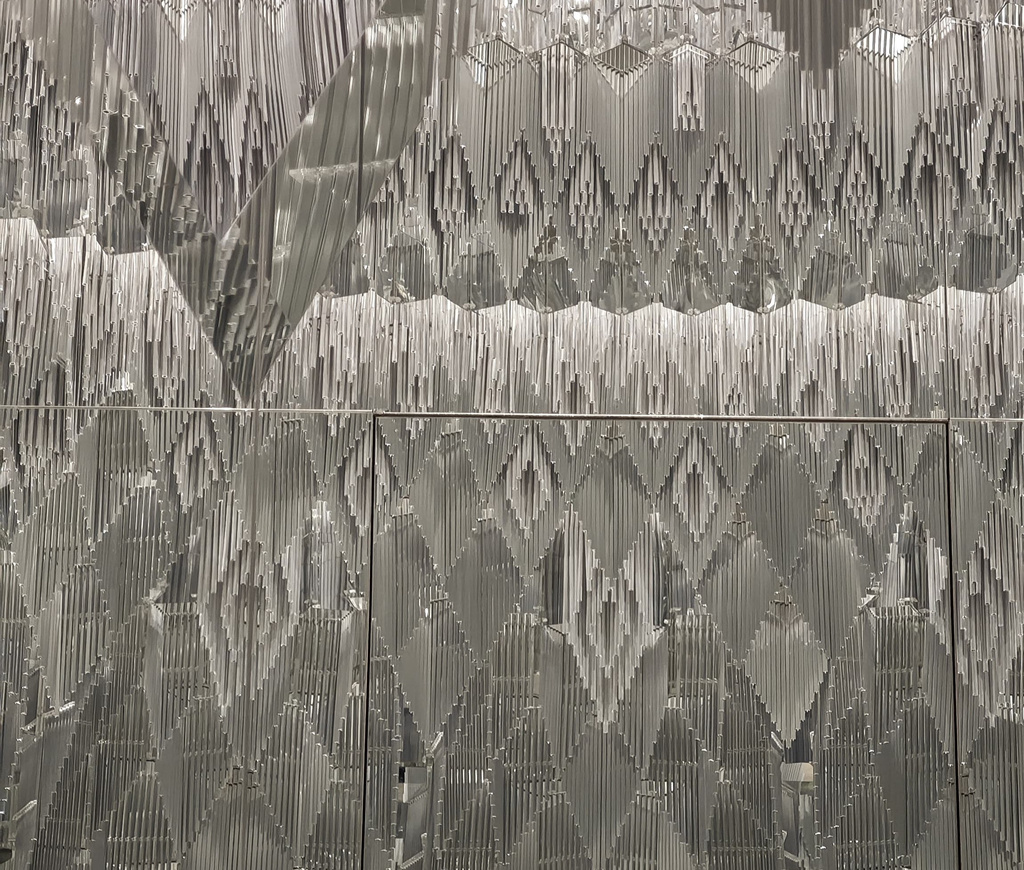Ghadeer Mohammad pays homage to the sublime ceiling decoration in Islamic architecture.
The contrast between top and bottom, geometric and figurative, light and heavy, dynamic and rigid, and so many more discrepancies can be seen between Sadu weaving and Muqarnas art. Sadu weaving is deeply rooted in Bedouin culture in the Gulf, while Muqarnas is a form of 3D ornamentation used extensively in Islamic architecture. When I began working on my art installation, The Muqarnas of Sadu, the first question that came to my mind was: How can two such distinct art forms coexist in a single art piece? Should one dominate the other, or can they share equal power? What can each learn from its counterpart? The questions were endless, and I was eager to explore them.
- Sadu weaving
- Muqarnas dome, Alhambra palace, Granada
This project was part of SADI, an annual exhibition organized by the Sadu House that invites five Kuwaiti artists to create artworks inspired by Sadu weaving. For my piece, I dived into researching both art forms—their origins, materials, geometry, and more. Since I already have extensive knowledge about Muqarnas art, I focused more on Sadu weaving. I was honored to meet traditional Sadu weavers who shared insights about this intricate craft. After thorough research, I extracted multiple Sadu patterns and began experimenting, generating a wide range of digital models representing each one. Sadu patterns are rich with symbols evoking Bedouin culture, such as tent furnishings, desert animals, and women’s jewelry.
- Early experiments with digital modeling
- Natural dying workshop, Sadu house
During the conceptual phase, I explored materials, searching for one that would contrast with Sadu’s traditional wool while also interacting with lighting. All these experiments helped shape my final design concept: a full dome where Muqarnas forms the structural skeleton, with Sadu motifs distributed within its modules. The dome materialized with 4,000 mill-finished aluminium pipes, which represented the woven Sadu patterns—nested within a structural skeleton of 6,000 polished aluminium T-angles that formed the Muqarnas modules.
The design phase was one of the toughest stages. Though I had digitally modeled many existing Muqarnas structures, designing one from scratch was challenging. It required deep analysis of Muqarnas composition to develop my own. Another key challenge was the limited exhibition space, which couldn’t accommodate a full large-dome. Instead, I created a half-dome and used a mirror to reflect its other half, giving the illusion of a complete dome—a detail many viewers loved. After months of balancing both art forms, The Muqarnas of Sadu was finally ready for execution.
During the execution, I was fortunate to have a hardworking team helping me assemble this monumental piece. We had countless discussions during assembly, especially when things didn’t align on the first try. Unexpected issues arose, forcing us to improvise and develop backup plans.
- Modules assembly, Acrylic
- Fixing broken pieces
The assembly took place in two locations: our studio and the Sadu House. Hanging the pieces myself with my team was incredibly satisfying—unlike some artists who leave execution entirely to contractors, I took care of this process with my team, ensuring every piece was positioned to perfection. I believe assembling your own work imprints a piece of your soul onto it, something intangible but deeply felt by any artist.
Three weeks after the final assembly at the Sadu House, the opening night arrived. Seeing people’s reactions was a joy—many were surprised to realize that the dome was only one half, with the mirror completing the illusion. The reflective acrylic and gleaming aluminium caught the light differently from every angle, making the Sadu patterns appear to shift within the Muqarnas framework. What made the experience special was its accessibility: people of all ages, backgrounds, and interests were able to engage with it. From the start of the project, I wanted the concept to be simple and inclusive. I believe art doesn’t always have to be highly conceptual or exclusive to a certain group of people; it can bring people together, regardless of who they are or what they love.
- The Muqarnas of Sadu final reveal.
- The Muqarnas of Sadu final reveal.
- The Muqarnas of Sadu, close up shot
The installation comes alive as light filters through the polished aluminium surfaces, casting playful reflections and shadows that dance across the space and move with the viewer’s perspective. The interplay of light and material creates an immersive experience, inviting viewers to explore the dialogue between tradition and innovation. Through its interplay of light, geometry, and pattern, The Muqarnas of Sadu creates a space for contemplation, connection, and celebration of the threads that bind us to our ancestors.
About Ghadeer Mohammad
 Ghadeer Mohammad is an architect and artist. She obtained her Bachelor’s degree in Architecture from Kuwait University. Her main area of interest is in the incorporation of digital tools into architectural practices and their innovative applications in design methodologies. Currently, she is concentrating on her “Muqarnas Archive ” project, which aims to establish a digital archive comprising various digital models of existing muqarnas. Follow @ghadeer.alk_
Ghadeer Mohammad is an architect and artist. She obtained her Bachelor’s degree in Architecture from Kuwait University. Her main area of interest is in the incorporation of digital tools into architectural practices and their innovative applications in design methodologies. Currently, she is concentrating on her “Muqarnas Archive ” project, which aims to establish a digital archive comprising various digital models of existing muqarnas. Follow @ghadeer.alk_
